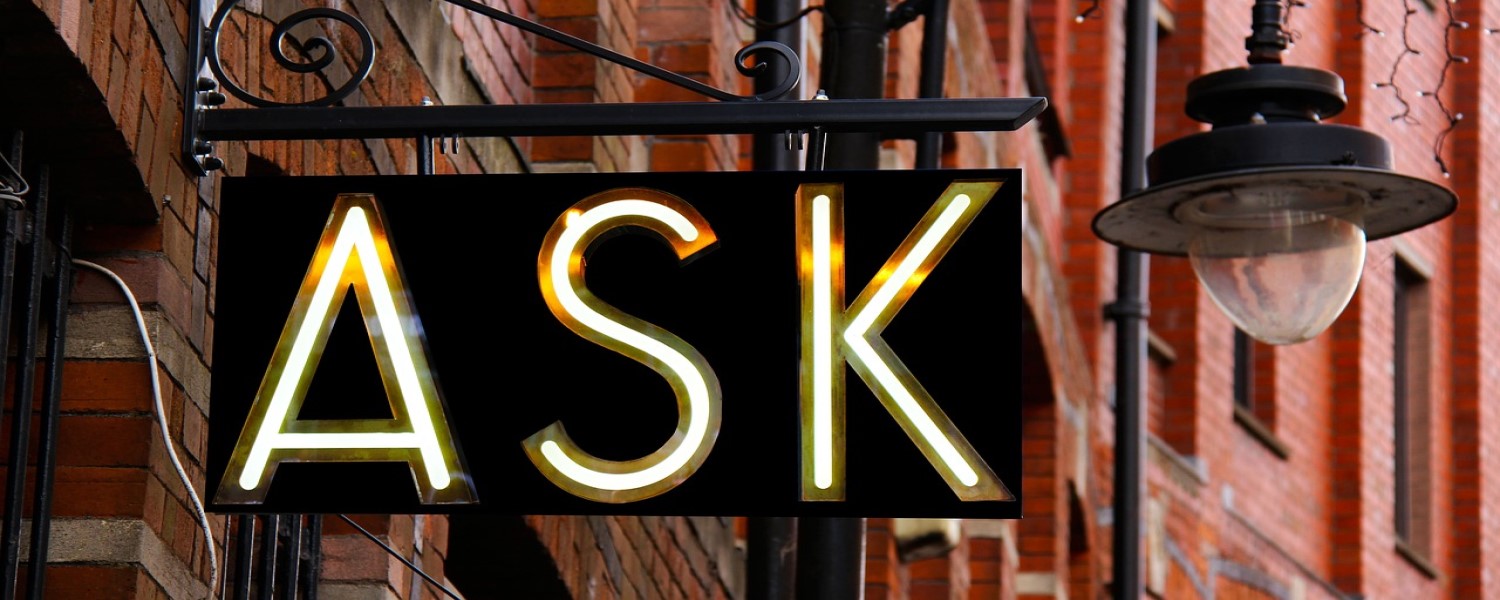This is the Impact of Asking “And what else?”
Anyone who was around back in the late 1970s will remember the TV advertisements for Ginsu knives. The ads paved the way for today’s infommercials by telling you all about the amazing knives they were hawking and all for a low-low price. And then, just as you thought they were going to tell you how much this would cost you, they would say, “but wait, there’s more!” They would then proceed to sweeten the deal by adding a few more things. Then, just as you were expecting them to tell you the price, they would do it again and say, “but wait, there’s more!”, to which they would sweeten the deal even more by throwing a bunch of other stuff you didn’t need into the mix!
In today’s post, we aren’t going to offer you anything like that, not even close, BUT we will offer you a question that you can ask that can do something similar with your interpersonal communications.
The Question: 3 Little Words
In, The Coaching Habit: Say Less, Ask More & Change the Way You Lead Forever, author Michael Bungay Stanier reveals what he calls “the Best Coaching Question in the World” and he believes we will marvel at the power of the three short words of which it consists, as he says:
“I know they seem innocuous. Three little words. But And What Else? —the AWE Question—has magical properties. With seemingly no effort, it creates more—more wisdom, more insights, more self-awareness, more possibilities—out of thin air.” 1

The Impact of Asking And what else?
There are three reasons that asking, And what else? has the profound impact that it does:
(1) More options equal better decisions
What’s true and probably obvious is that when we ask someone a question, the first answer we receive is almost never the only answer, and rarely the best one.
According to Stanier:
“When you use And what else? you’ll get more options and often better options. Better options lead to better decisions. Better decisions lead to greater success.” 1
(2) You Reign in the Advice Monster
In his book, Stanier shares a great haiku which goes like this:
Tell less and ask more.
Your advice is not as good
As you think it is
The point he is trying to make is this, we all have a bad habit of jumping right into advice giver/I can fix-it/I can help you/expert mode. He calls it going into “Advice Monster” mode. We all love giving advice, even if it isn’t the right advice, which is typically the case. For some reason, giving advice feels a hell of a lot better than asking an ambiguous question.
Before we know it, we are jumping in with both feet trying to solve the problem and recommending steps forward without really understanding it. Asking And what else? can help break that pattern and help us to stay curious and learn more.
(3) You Buy Yourself Some More Time
We have all had those instances where we aren’t exactly sure what to do and we need a bit more time to figure things out. By asking And what else? we can delay things a bit to buy ourselves a little extra time.
Some Guidelines When Asking And what else?
Stanier gives several practical tips that we can use when asking And what else? in our lives:
(1) Be curious and genuine
Now that we have a great question to ask, the last thing that we want to happen is to fall into a boring old groove when asking it. The idea is to ask it with a sense of genuine interest and curiosity to figure out how it can help you and the interaction move forward.
(2) Ask it more than once
Stanier believes that we need to ask And what else several times, as he suggests:
“Let’s start with the understanding that as a general rule, people ask this question too few times rather than too many. And the way to master this habit is to try it out and experiment and see what works. As a guideline, I typically ask it at least three times, and rarely more than five.” 1
(3) Recognize what success looks like
At some point in a conversation someone may say to you, “and there is nothing else”. Rather than panic and get flustered, take that reaction as a positive. In other words, “there is nothing else” should be a phrase you are trying to elicit from the other person. When this happens, take a breath and simply move on to your next question.
(4) Move on at the right time
There will also be times that you can feel the energy start to drain from the conversation. When this happens, a perfectly acceptable way to move on is to wrap things up by asking, “is there anything else?”. By using this variation of And what else you are inviting closure to the conversation while still leaving room for anything else that needs to be said.
Can You Have Too Many Choices?
You may be asking yourself, “is it possible to have too many options?”.
In a book I referenced in a previous post, The Paradox of Choice, author Barry Schwartz concluded that increased choice does not make us happier. Rather, it increases our anxiety, analysis paralysis, and indecision; and many times, we end up dissatisfied!
And science has chimed into this conversation by saying that 4 is roughly the ideal number that can chunk information.
In terms of applying this to asking, And what else?, according to Stanier:
“So, as you ask, “And what else?” the goal isn’t to generate a bazillion options. It’s to see what ideas that person has (while effectively stopping you from leaping in with your own ideas). If you get three to five answers, then you’ve made great progress indeed.” 1
When to ask, And what else?
Let’s now look at some specific situations where we can ask And what else? in our lives:
 After asking someone what is on their mind, you can then ask them, And what else?
After asking someone what is on their mind, you can then ask them, And what else?
 If you ask someone about the course of action they are about to take, you could follow up by challenging them with, And what else could you do?
If you ask someone about the course of action they are about to take, you could follow up by challenging them with, And what else could you do?
 When you are trying to get at the heart of a problem and the person gives a vague or wishy-washy response, you could probe deeper by asking, And what else is a challenge for you here?
When you are trying to get at the heart of a problem and the person gives a vague or wishy-washy response, you could probe deeper by asking, And what else is a challenge for you here?
 If you have daily or weekly check-in meetings or huddles at work you can increase the pressure by asking, And what else?
If you have daily or weekly check-in meetings or huddles at work you can increase the pressure by asking, And what else?
 When people are trying to come up with a new idea or go down a new road, you can widen the potential possibilities by asking, And what else may be possible?
When people are trying to come up with a new idea or go down a new road, you can widen the potential possibilities by asking, And what else may be possible?
 During brainstorming sessions when you don’t want to get weighed down, you can keep the energy up by asking, And what else?
During brainstorming sessions when you don’t want to get weighed down, you can keep the energy up by asking, And what else?
So, While We Aren’t Selling You Any Knives…
…we do want you to remember that the first answer another person gives you is almost never the only one or the best one!
But wait, there’s more…
That’s right, sharpen your questioning skills and give yourself more options by using And what else?
But wait, before we go, there’s more…
If you haven’t subscribed to our weekly blog posts summary, sign up for it a little higher up on this page and if you haven’t shared this post with someone that you love who will get something out of it, do that too!
Prime Your Pump – the blog that is “a cut above”! Sorry, I couldn’t resist!
Until next time, keep asking “and what else?”, and as always…PYMFP!
–Rick
P.S. Wanna know more? Check out the entire book.

Use it Or Lose It
Some guidelines we discussed for using “And what else” are:
(1) Be curious and genuine.
(2) Ask it more than once.
(3) Recognize what success looks like.
(4) Move on at the right time.
What Do You Think?
What do you think of using “And what else?”? Is “And what else?” something that you use often? Please share your thoughts in the comments below!
If you enjoyed this post, it would mean the world to us if you shared it with people you care about via any of the social media platforms below!
Popular Previous Posts:
This is How to Express Yourself in Difficult Conversations
The Relentless 13: This is How to Be a Cleaner
These Are the 4 Components of the Friendship Formula!
This is How to Harness the Power of Creating Routines
References
1 The Coaching Habit: Say Less, Ask More & Change the Way You Lead Forever by Michael Bungay Stanier

Great commentary. This has been a very effective technique. If the responses to “is there anything else” seem like a rehash of what has already been said, that’s the cue to move on to the next topic, or break for lunch.
But wait, there’s more. If the meeting/gathering is dragging on, the comment “is there anything else” will be met with a universal NO, either verbally or by head shaking. The moderator mush recognize when to quit.
Hi Dave, Exactly – noticing that cue to move on is critical! Great point on the moderator knowing when to quit, we have all been in meetings where that has not been the case and it ends up being like nails on a chalkboard! Thanks and take care! Rick